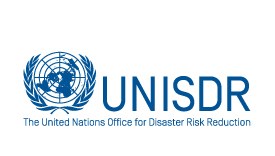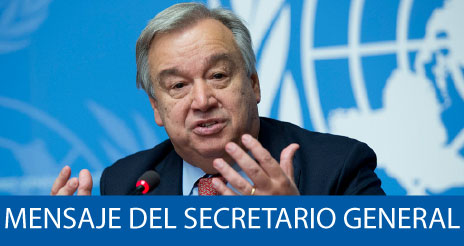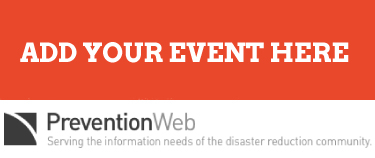
International Day for Disaster Risk Reduction - #IDDR
The International Day for Disaster Reduction - #IDDR is a day to celebrate how people and communities are reducing their risk to disasters and increasing the awareness of the importance of disaster risk reduction. Also, this is a day to urge all citizens and governments to be part in efforts to establish communities that will make more disaster- resilient nations.
The #IDDR and the Sendai Framework:
The Sendai Framework has targets focused on increasing national and local disaster risk reduction strategies by 2020, enhanced international cooperation to developing countries and increased availability of multi-hazard early warning systems.
Theme of #IDDR17- #HomeSafeHome
The United Nations General Assembly has designated 13 October as International Day for Disaster Reduction to promote a global culture of disaster reduction, including disaster prevention, mitigation and preparedness. For 25 years, the International Day for Disaster Reduction (IDDR) has been a major global awareness event to recognize progress and encourage further efforts to build disaster resilient communities and nations.
After the campaign titled Step Up, which started in 2011, each year was dedicated to a particular group of persons vulnerable to disasters - children and young people (2011), women and girls (2012), people with (2013), older people (2014) and indigenous peoples (2015) - UNDRR is currently launching the Sendai Seven campaign to promote each of the seven goals included in the Sendai Framework for Disaster Risk Reduction , adopted in Sendai, Japan in March 2015.
Similar to what happened during the One Step Forward Campaign, the success of the Sendai Seven campaign will depend on the participation of a wide range of stakeholders, in order to promote greater awareness of the Sendai Framework and the actions needed for its application and achieving its goals.
The Sendai Seven Campaign represents an opportunity for all actors, including national and local governments, community groups, civil society organizations, the private sector, international organizations and the UN family to promote best practice in the international, regional and national levels and in the various sectors, in order to reduce the risk of disasters and the losses disasters cause.
INTERNATIONAL DAY FOR DISASTER RISK REDUCTION 2017 – HOME SAFE HOME REDUCING EXPOSURE, REDUCING DISPLACEMENT #switch2sendai #IDDR2017
Goal: Use International Day for Disaster Reduction on 13 October 2017 to:
Provide an advocacy platform to all governments, local governments, disaster management agencies, UN agencies, NGOs, Red Cross and Red Crescent societies, civil society groups, businesses, academic and scientific institutions, and other interested groups to demonstrate support for gender-sensitive implementation of the Sendai Framework and to highlight achievements and challenges in so doing with a particular focus on reducing the numbers of people affected by disasters.
While not every natural hazard has devastating consequences, a combination of natural, cultural, social and political factors contributes to disasters. Over the last twenty years, over 1.35 million have died as a result of their vulnerability and exposure to natural hazards with women and girls bearing a heavy toll; and over four billion have been displaced and left homeless, injured or in need of emergency assistance. Deaths due to disasters from weather- and climate-related events (floods, storms and heatwaves in particular) account for the majority of disaster deaths in most years and there has been a sustained rise, more than doubling, over the past forty years. More than half of disaster mortality is caused by extreme geophysical disaster events, primarily earthquakes, including tsunamis, and volcanic eruptions. Source: CRED – UNDRR (2016). Poverty & Death: Disaster Mortality 1996-2015.
The 2017 campaign will seek to raise global awareness about effective actions, policies and practices taken to reduce exposure to disaster risk at the community level thereby contributing to saving homes and livelihoods. This is a considerable challenge which can be accomplished only through coordination, cooperation and collaboration among many stakeholders. Yet it is apparent that taking action on Target (b) will be amplified by having a positive impact on saving lives Target (a), reducing economic losses Target (c) and damage to critical infrastructure Target (d). It will also provide evidence that strategies are in place at national and local level Target (e).
The successful implementation of the Sendai Framework is critical to the achievement of 2030 Agenda for Sustainable Development, notably the Sustainable Development Goals and the Paris Agreement on Climate Change. To implement the SDGs, we need to match the progress we have made in reducing loss of life from disasters by making similar advances in reducing the numbers of people affected. Disasters are gateways to poverty and distress for many vulnerable people living in low and middle-income countries. Large-scale displacement can increase migration flows.
Reducing the risks which accrue from rapid urbanisation, poverty, environmental deterioration and climate change is best achieved by avoiding the creation of these risks in the first place. We are all responsible, and the success of the SDGs depends on it.
All stakeholders are urged to use the opportunity of October 13 to tell the world what you are doing individually and collectively to implement the Sendai Framework in order to reduce exposure and displacement, to enhance women empowerment and leadership, and improve health and economic outcomes for families at risk. This recognition that durable and sustainable change is possible will reinforce the dedication and commitment to reach the targets set for 2030 with substantially reduced numbers of people affected globally.
Some questions to consider....
- Are your actions and partnerships helping to reduce the numbers of people affected by disasters and how are you doing this?
-
¿Do you provide open and timely access to risk maps, risk profiles, risk data and information to inform plans and decisions that prevent or mitigate disasters?
-
Do you collect data on disaster affected persons by age, gender and disability?
- Are you facilitating coordination between various partners and stakeholders to reduce exposure and displacement?
-
Are you improving how risk-informed people are about where they live and work?
-
Have you been able to assist governments, local governments and the private sector to avoid locating homes and businesses in hazard prone locations?
- Have you been able to support, directly or indirectly, improvements in the standard of housing and/or support “build back better” initiatives in hazard-prone locations?
The five indicators adopted by the UN General Assembly for measuring achievement for the Sendai Framework target (b)
- Number of directly affected people attributed to disasters, per 100,000 population. -
- Number of injured or ill people attributed to disasters, per 100,000 population.
- Number of people whose damaged dwellings were attributed to disasters.
- Number of people whose destroyed dwellings were attributed to disasters.
- Number of people whose livelihoods were disrupted or destroyed, attributed to disasters
THE SENDAI SEVEN CAMPAIGN – Seven goals, seven years (2016 -2022)
Our communications team would love to hear from you about any success you have had in reducing the numbers of people affected by disasters in your region, country or at community level. We are particularly interested in examples which demonstrate inclusion and gender-sensitivity. This is developed further in the attached concept note.
A key focus of the campaign is on the issue of disaster-related displacement and what can be done to protect people in the home and workplace from disasters, and to make these locations more resilient to disasters. This is a key challenge in many hazard-exposed parts of the world but notably in low and middle-income countries.
Please get in touch with UNDRR Communications – Regional Office of the Americas (ccornejo@eird.org) for any clarifications or further information.
- 2016 – Target (a): Substantially reduce global disaster mortality by 2030, aiming to lower the average per 100,000 global mortality rate in the decade 2020- 2030 compared to the period 2005-2015
- 2017 – Target (b): Substantially reduce the number of people affected globally by 2030, aiming to lower the average global figure per 100,000 in the decade 2020- 2030 compared to the period 2005-2015;
- 2018 – Target (c): Reduce direct disaster economic loss in relation to global gross domestic product (GDP) by 2030;
- 2019 – Target (d): Substantially reduce disaster damage to critical infrastructure and disruption of basic services, among them health and educational facilities, including through developing their resilience by 2030;
- 2020 – Target (e): Substantially increase the number of countries with national and local disaster risk reduction strategies by 2020;
- 2021 – Target (f): Substantially enhance international cooperation to developing countries through adequate and sustainable support to complement their national actions for implementation of the present Framework by 2030;
- 2022 – Target (g): Substantially increase the availability of and access to multi-hazard early warning systems and disaster risk information and assessments to people by 2030.
¿What are the origins of the International Day for Disaster Risk Reduction?
The celebration of the International Day for Disaster Risk Reduction #IDDR started in 1989. That year, the General Assembly of the United Nations approved its celebration, after considering that the #IDDR represents a way to promote a global culture of disaster risk reduction, which includes prevention, mitigation and preparation.
Originally, the #IDDR is celebrated the second Wednesday of October, but in the year 2009 the General Assembly decided to establish the 13 th of October of each year as the date in which the International Day for Disaster Risk Reduction - #IDDR would be celebrated.
 |
Mr. Robert Glasser, Chief of UNDRR today launched "The Sendai Seven Campaign – 7 Targets, 7 Years", an advocacy initiative to encourage implementation of the Sendai Framework for Disaster Risk Reduction with the goal of increasing the degree of sensitivity at a global level on a series of effective actions, policies and practices that have been implemented to reduce disaster exposure at the community level, thereby contributing to saving households and livelihoods. This represents a considerable challenge, which can only be overcome through coordination, cooperation and collaboration between various stakeholder groups. |
Mr. Glasser stated that "Home Safe Home" will be the motto of the International Day for Disaster Reduction 2017, after a year in which the Internal Displacement Monitoring Center (IDMC) registered 24, 2 million displacements due to disasters.
The Sendai Seven campaign represents an opportunity for governments, local authorities, UN agencies and all other interested groups, such as the private sector, science and technology counterparts, community groups and civil society, to promote and publicize best practices at the national, regional and international levels to reduce the risk of disasters and the losses they cause.
Celebrating IDDR17? Show us your pictures!
Share something special you have learned about dramatically reducing the number of people affected globally by 2030.
Questions?
To obtain more information regarding the International Day for Disaster Risk Reduction please address the communications team of UNDRR ccornejo@eird.org
This page was made under the lineaments of the document regarding Internet accesibility to webpages of the United Nations..




